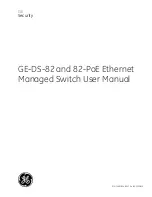
Chapter 15 Voice
Basic Home Station VDSL2 P8802T User’s Guide
216
• “x” stands for a wildcard and can be any digit from 0 to 9.
• A subset of keys is in a square bracket []. Ranges are allowed.
For example, [359] means a number matching this rule can be 3, 5 or 9. [26-
8*] means a number matching this rule can be 2, 6, 7, 8 or *.
• The dot “.” appended to a digit allows the digit to be ignored or repeated
multiple times. Any digit (0~9, *, #) after the dot will be ignored.
For example, (01.) means a number matching this rule can be 0, 01, 0111,
01111, and so on.
• <dialed-number:translated-number> indicates the number after the colon
replaces the number before the colon in an angle bracket <>. For example,
(<:1212> xxxxxxx) means the VDSL Router automatically prefixes the
translated-number “1212” to the number you dialed before making the call. This
can be used for local calls in the US.
(<9:> xxx xxxxxxx) means the VDSL Router automatically removes the
specified prefix “9” from the number you dialed before making the call. This is
always used for making outside calls from an office.
(xx<123:456>xxxx) means the VDSL Router automatically translates “123” to
“456” in the number you dialed before making the call.
• Calls with a number followed by the exclamation mark “!” will be dropped.
• Calls with a number followed by the termination character “@” will be made
immediately. Any digit (0~9, *, #) after the @ character will be ignored.
In this example dial plan (0 | [49]11 | 1 [2-9]xx xxxxxxx | 1 947 xxxxxxx !), you
can dial “0” to call the local operator, call 411 or 911, or make a long distance call
with an area code starting from 2 to 9 in the US. The calls with the area code 947
will be dropped.
15.5 The Phone Region Screen
Use this screen to maintain settings that depend on which region of the world the
VDSL Router is in. To access this screen, click VoIP > Phone > Region.
Figure 90
VoIP > Phone > Region
Summary of Contents for P8802T
Page 10: ...Table of Contents Basic Home Station VDSL2 P8802T User s Guide 10...
Page 11: ...11 PART I User s Guide...
Page 12: ...12...
Page 58: ...Chapter 2 User Setup Guide Basic Home Station VDSL2 P8802T User s Guide 58...
Page 59: ...59 PART II Technical Reference...
Page 60: ...60...
Page 74: ...Chapter 3 Device Info Screens Basic Home Station VDSL2 P8802T User s Guide 74...
Page 120: ...Chapter 6 Network Address Translation NAT Basic Home Station VDSL2 P8802T User s Guide 120...
Page 150: ...Chapter 10 DNS Setup Basic Home Station VDSL2 P8802T User s Guide 150...
Page 160: ...Chapter 11 UPnP Basic Home Station VDSL2 P8802T User s Guide 160...
Page 168: ...Chapter 12 USB Services Basic Home Station VDSL2 P8802T User s Guide 168...
Page 200: ...Chapter 14 Wireless Basic Home Station VDSL2 P8802T User s Guide 200...
Page 204: ...Chapter 15 Voice Basic Home Station VDSL2 P8802T User s Guide 204...
Page 240: ...Chapter 16 Diagnostic Basic Home Station VDSL2 P8802T User s Guide 240...
Page 244: ...Chapter 17 Settings Basic Home Station VDSL2 P8802T User s Guide 244...
Page 248: ...Chapter 18 Log Basic Home Station VDSL2 P8802T User s Guide 248...
Page 252: ...Chapter 19 TR 069 Client Basic Home Station VDSL2 P8802T User s Guide 252...
Page 254: ...Chapter 20 Internet Time Basic Home Station VDSL2 P8802T User s Guide 254...
Page 256: ...Chapter 21 Access Control Basic Home Station VDSL2 P8802T User s Guide 256...
Page 260: ...Chapter 23 Reboot Basic Home Station VDSL2 P8802T User s Guide 260...
Page 268: ...Chapter 24 Troubleshooting Basic Home Station VDSL2 P8802T User s Guide 268...
Page 272: ...Appendix A Legal Information Basic Home Station VDSL2 P8802T User s Guide 272...















































